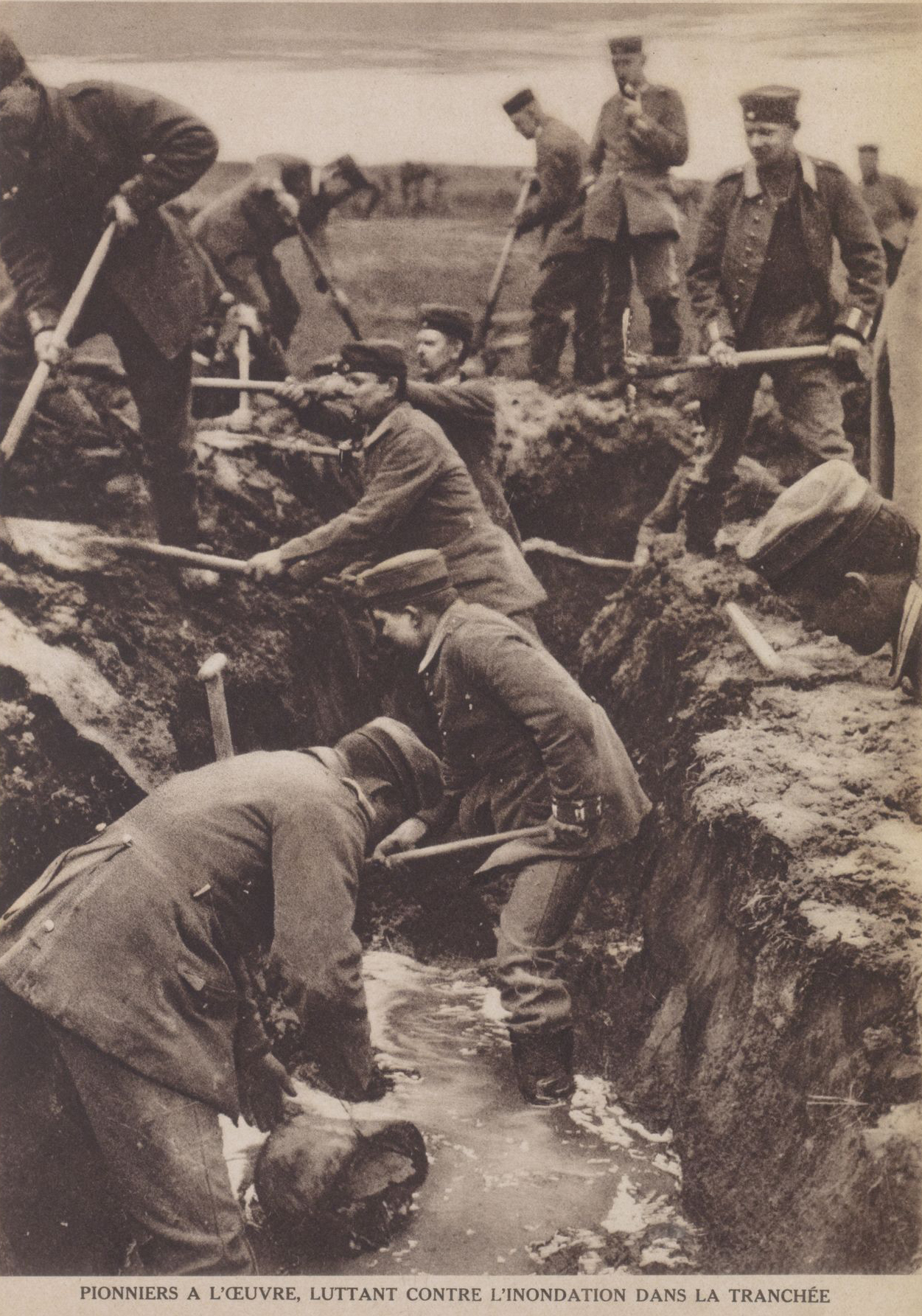In August 1914, the Germans advanced in a southerly and westerly direction through Belgium. They soon reached the French-Belgian border, but they were halted at the Marne by French and British troops.
The German military command would subsequently change plans and attempt to break through to Paris by tracing an arc west. The Germans began to move westwards and laid siege to the fortified stronghold of Antwerp. After the fall of the port, the Belgian soldiers were pushed back further in the direction of the coast.
In October, the Belgian army deployed over a forty-kilometre front along the Yser. But the exhausted soldiers would not be able to hold out for long against the approaching German troops, as the army command realised, unless a natural obstacle could halt the advancing Germans. A plan was worked out in great haste to flood the levels between the Yser and the nearby railway verge. The locks at the mouth of the Yser were opened at high tide so that the levels were flooded. By the end of October, the Yser levels were entirely flooded over and the German advance in the 'Westhoek' was halted. The front line would barely shift for the coming four years.



